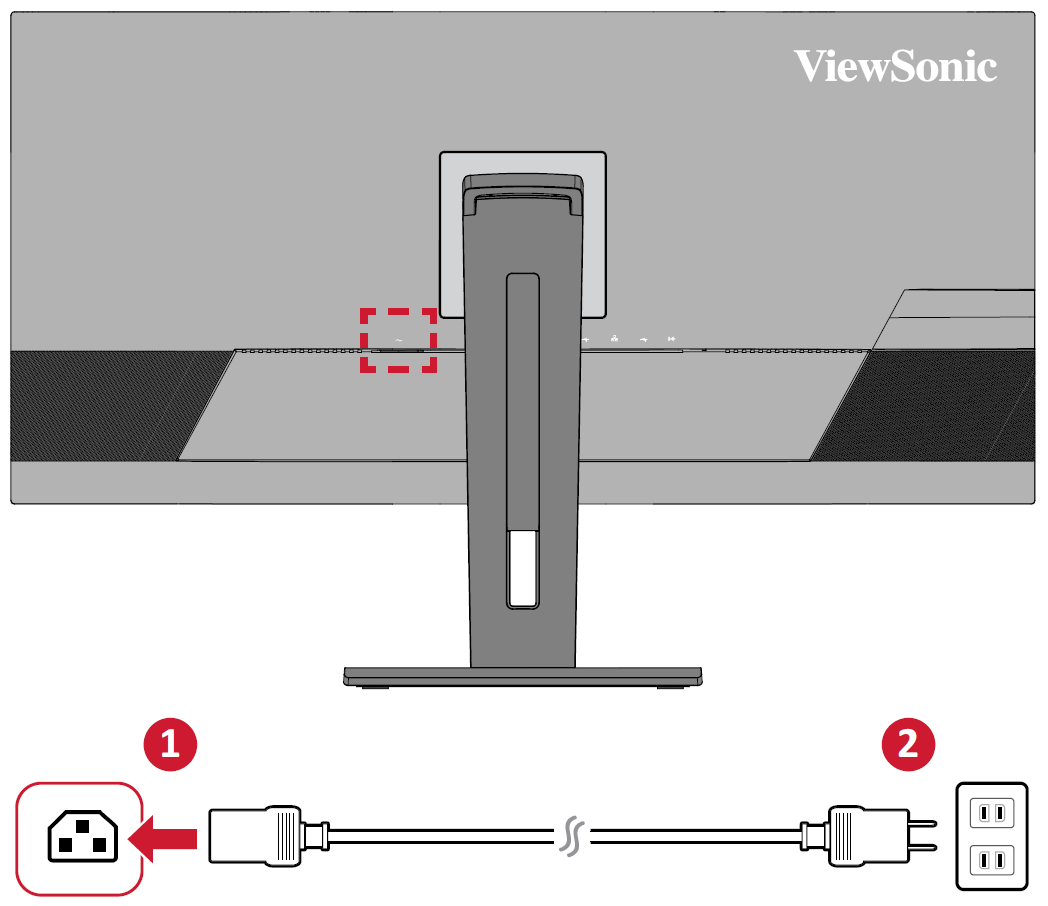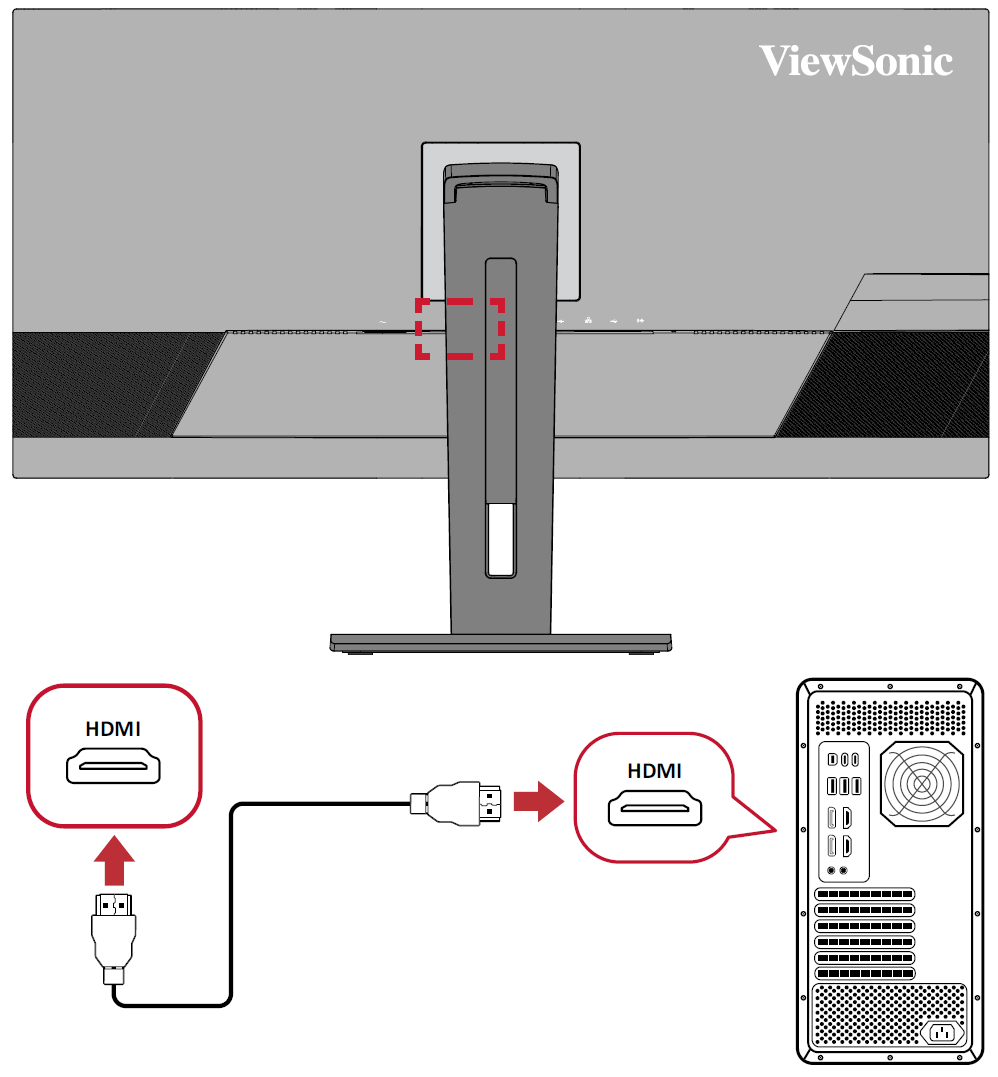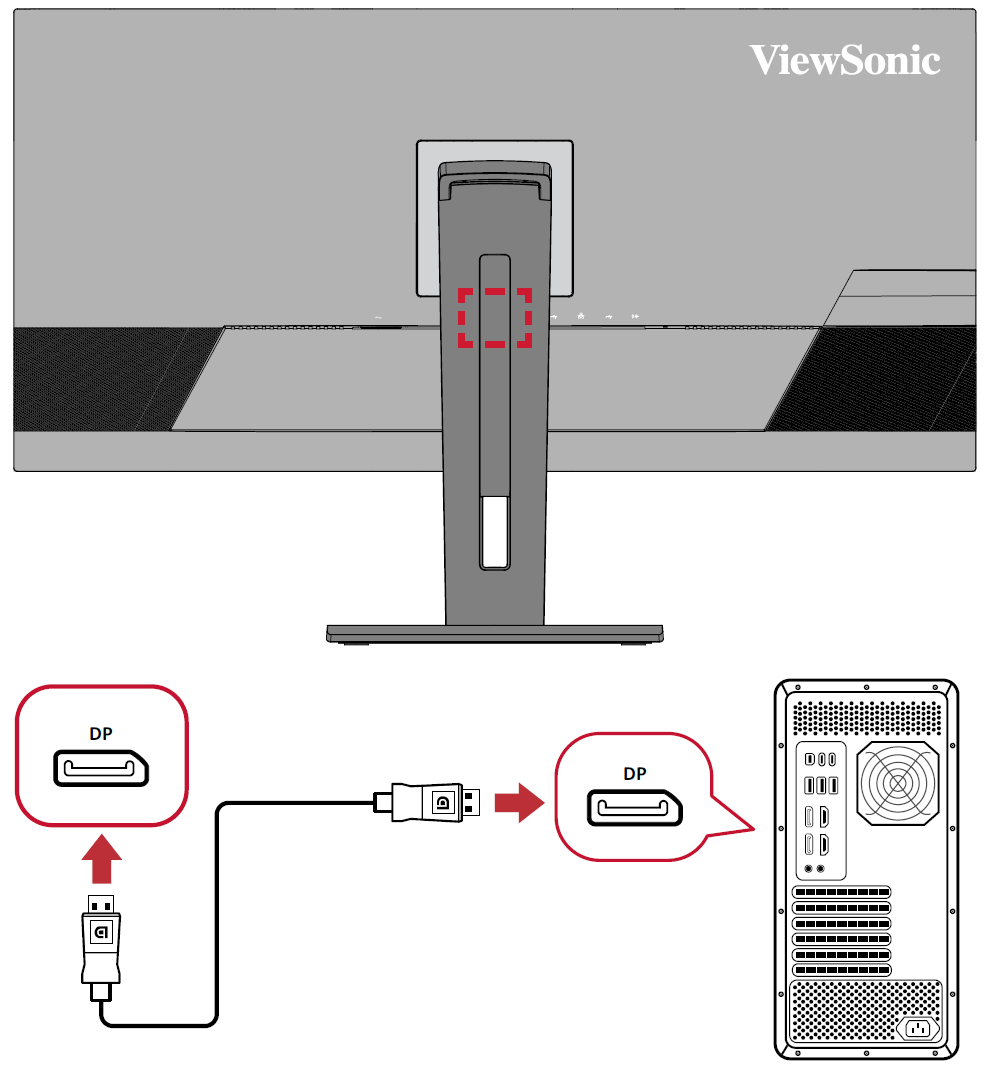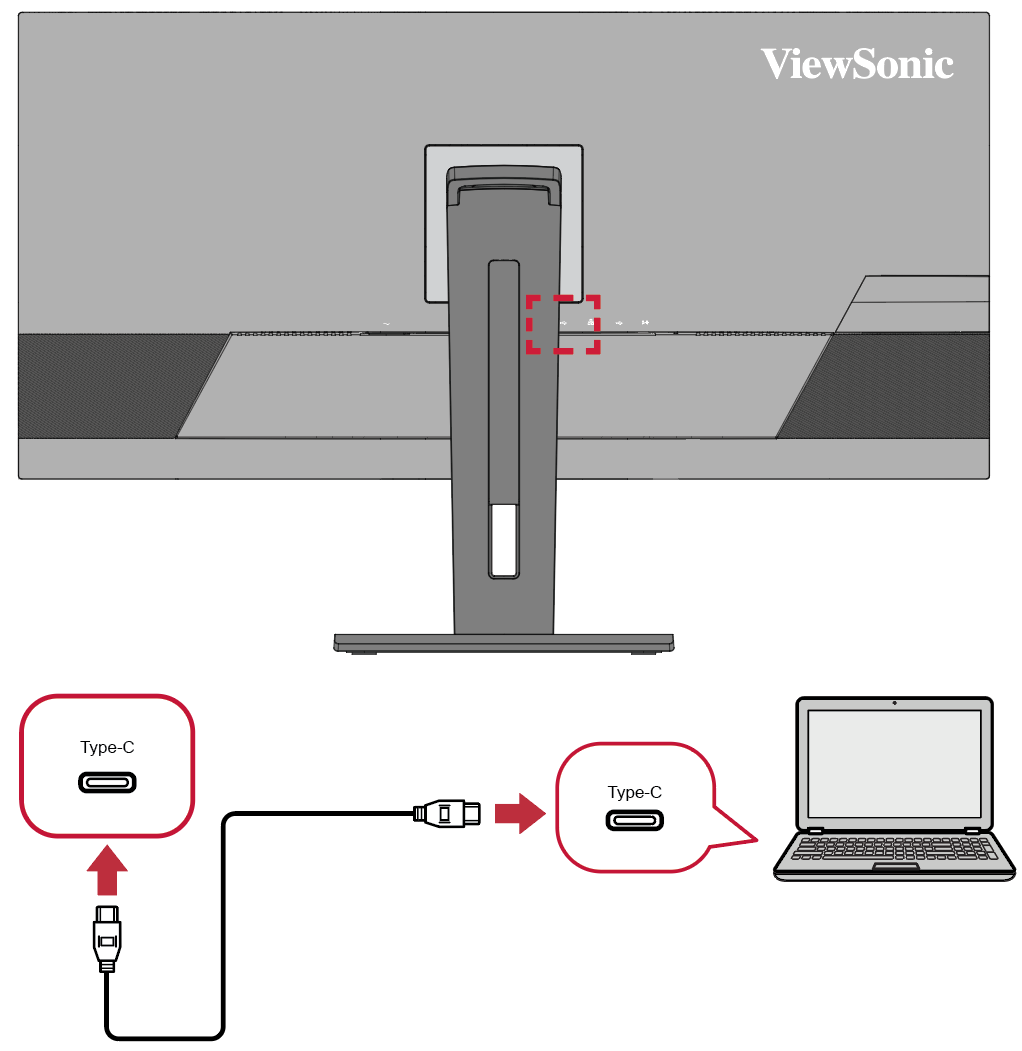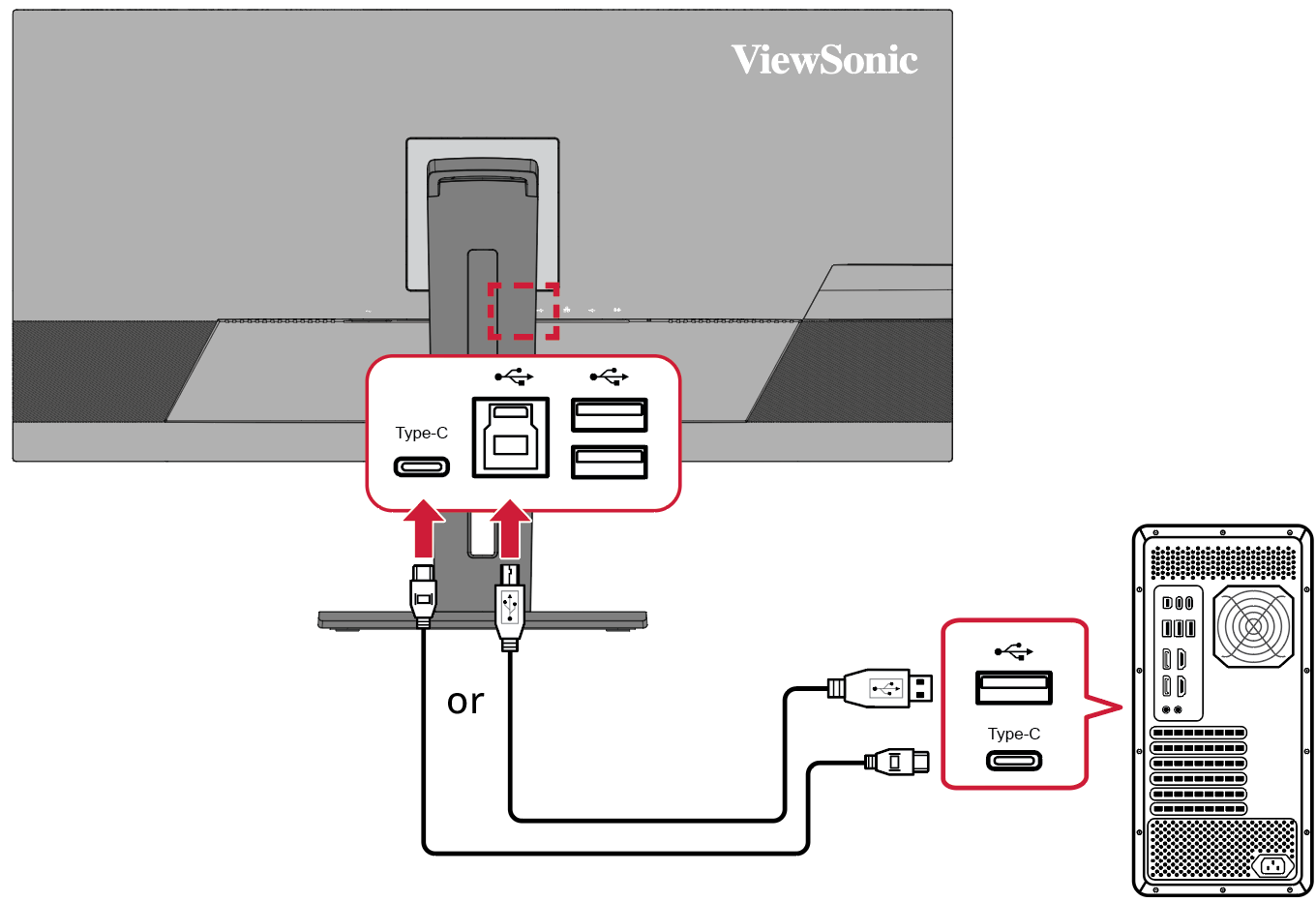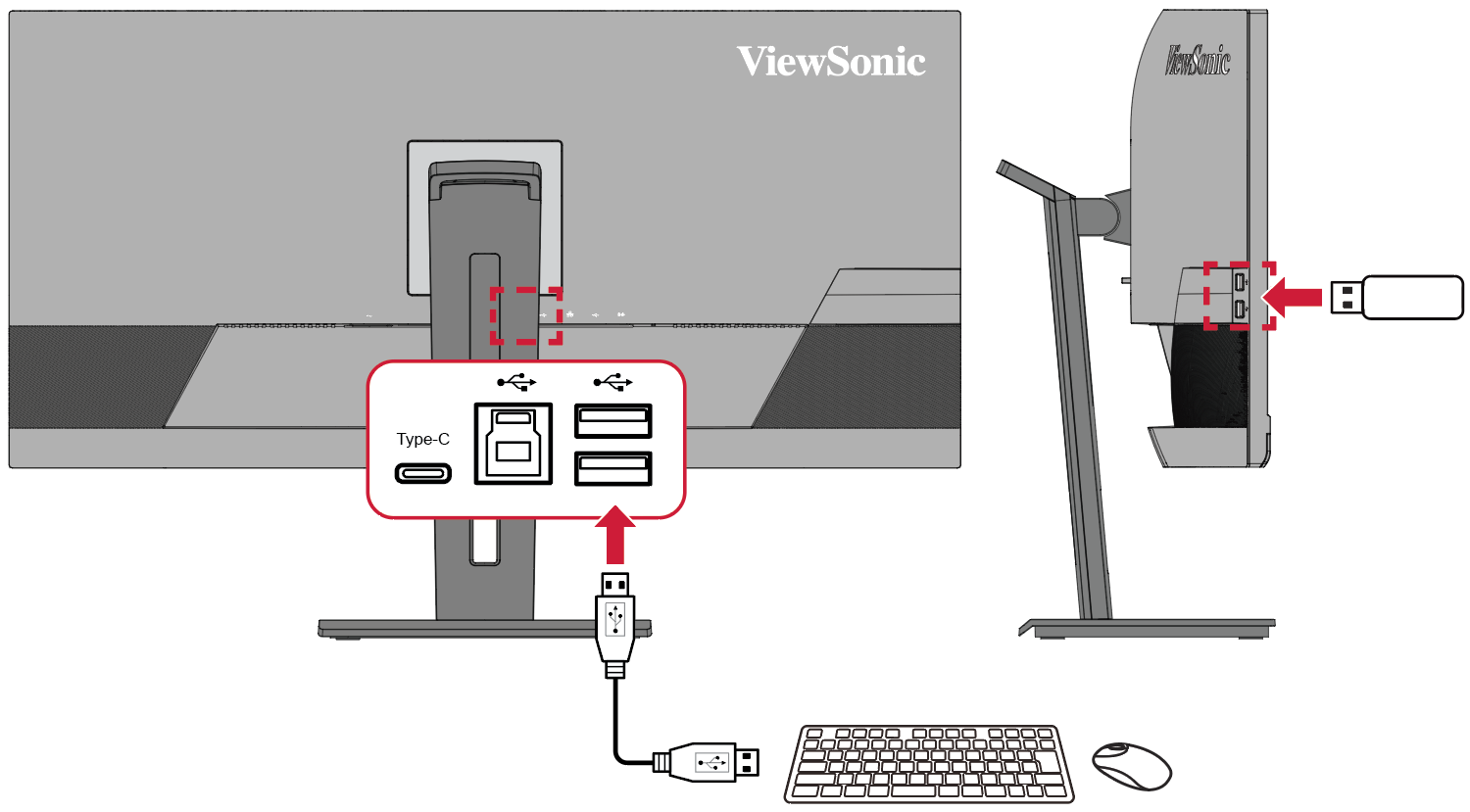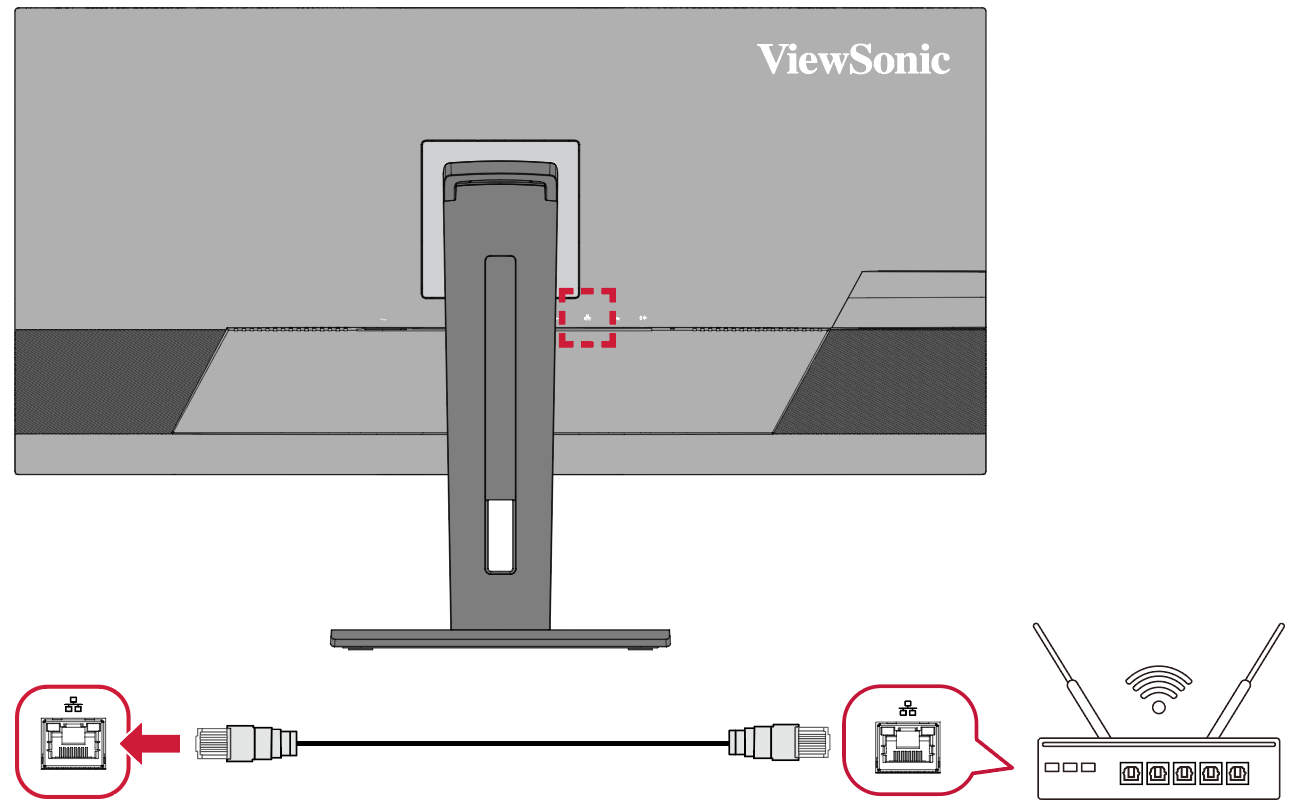VG3456C Connecting Power and Devices
Connecting to Power
- Connect the power cord to the AC IN jack at the rear of the device.
- Plug the power cord plug into a power outlet.
Connecting to Video
HDMI
- Connect one end of an HDMI cable to an HDMI port of the monitor.
- Plug the other end of the cable into the HDMI port of your computer.
DisplayPort
- Connect one end of a DisplayPort cable to the DisplayPort port of the monitor.
- Plug the other end of the cable into the DisplayPort or Mini DisplayPort port of your computer.
- Note: To connect the monitor to the Thunderbolt port (v. 1 & 2) on your Mac, connect the Mini DisplayPort end of a “Mini DisplayPort to DisplayPort cable” to the Thunderbolt output port of your Mac. Then connect the other end of the cable to the DisplayPort port of the monitor.
Type C
- Connect one end of a USB Type C cable to the rear upstream USB Type C port of the monitor.
- Plug the other end of the cable into the full-featured USB port of your computer.
- NOTE:
- For video output use, make sure your USB Type C output device (e.g., laptop) and cable are full-featured and support video signal transmission.
- When you use Type C as the video signal input source, it is recommended to unplug the DisplayPort and HDMI signals to avoid audio output confusion.
USB Connection
The monitor supports two (2) types of USB ports, upstream and downstream. When making connection(s), observe the following guidelines.
| USB Type | Connection Type | Description | |
|---|---|---|---|
| Upstream | Type C | Full-featured port: transfers data, audio, video, and power. | |
| Supports: 5V/3A, 9V/3A, 12V/3A, 15V/3A, 20V/4.9A (LPS) charging. | |||
| Type B | Transfers data between the computer and the USB devices connected to the monitor. | ||
| Downstream | Type A | For peripheral device(s) (e.g., storage device, keyboard, mouse, etc.). | |
Using the USB Ports
- To use the USB downstream ports, connect one end of a USB cable to a rear USB upstream port (Type C or Type B) of the monitor. Plug the other end of the cable into a USB port of your computer.
- Connect your peripheral device to a downstream USB port of the monitor.
- Note: If you are required to connect through either HDMI or DisplayPort, please also use a USB cable to connect to one of the monitor's USB upstream ports (Type C or Type B) to enable data transfer.
Ethernet Connection
- Connect one end of your LAN (RJ45) cable to the LAN (RJ45) port of the monitor.
- Plug the other end into your network modem or port.
- Ensure your computer is also connected to the monitor by a rear USB upstream port (Type C or Type B) of the monitor.
Ethernet Connection When Using USB Type C for Video Input
No further steps are required.
Ethernet Connection When Using DisplayPort or HDMI for Video Input
In addition to the DisplayPort or HDMI connection, please also connect your computer to a rear USB upstream port (Type C or Type B) of the monitor to enable data transfer.
Audio Connection
Plug the audio jack of the audio device into the Audio Out port of the monitor.

